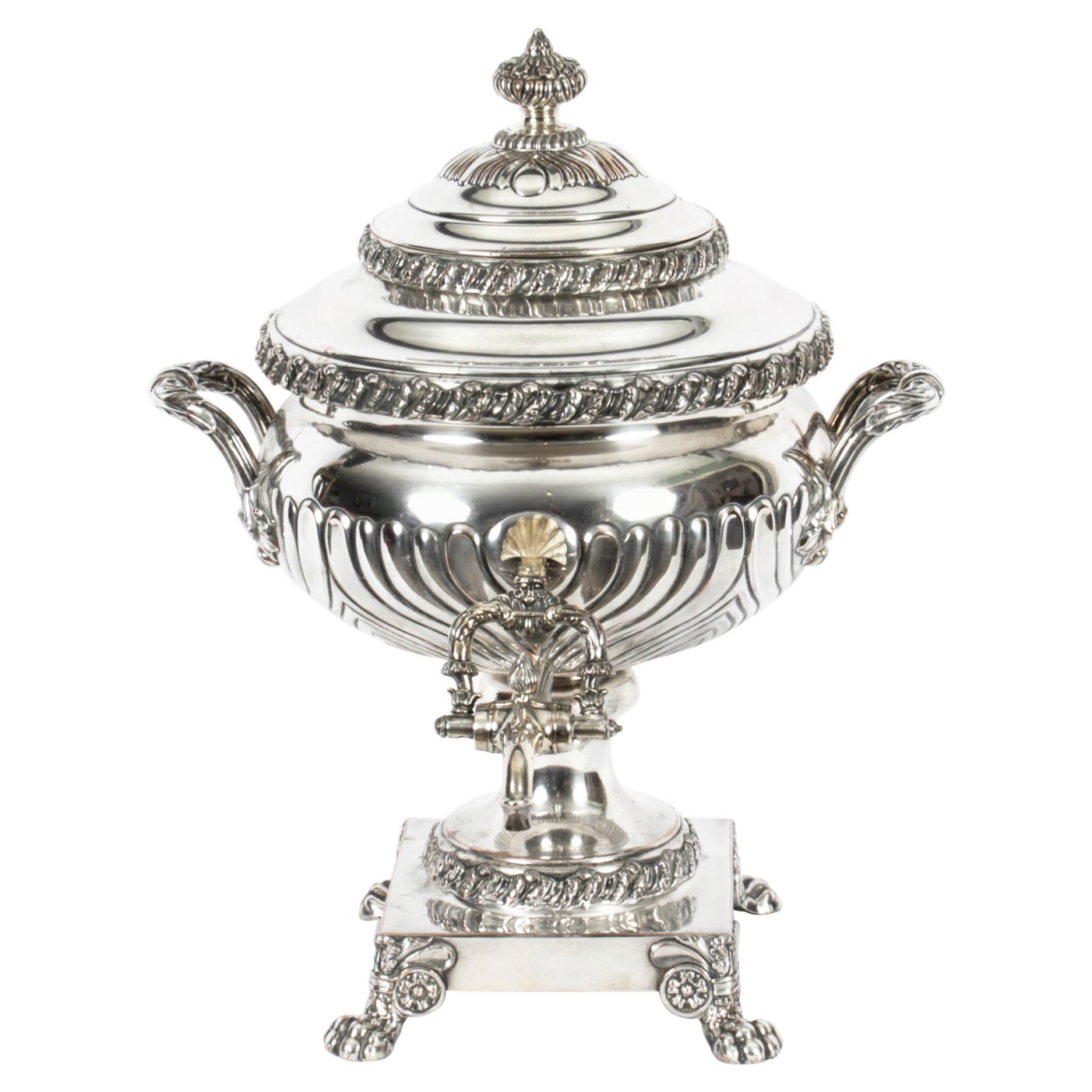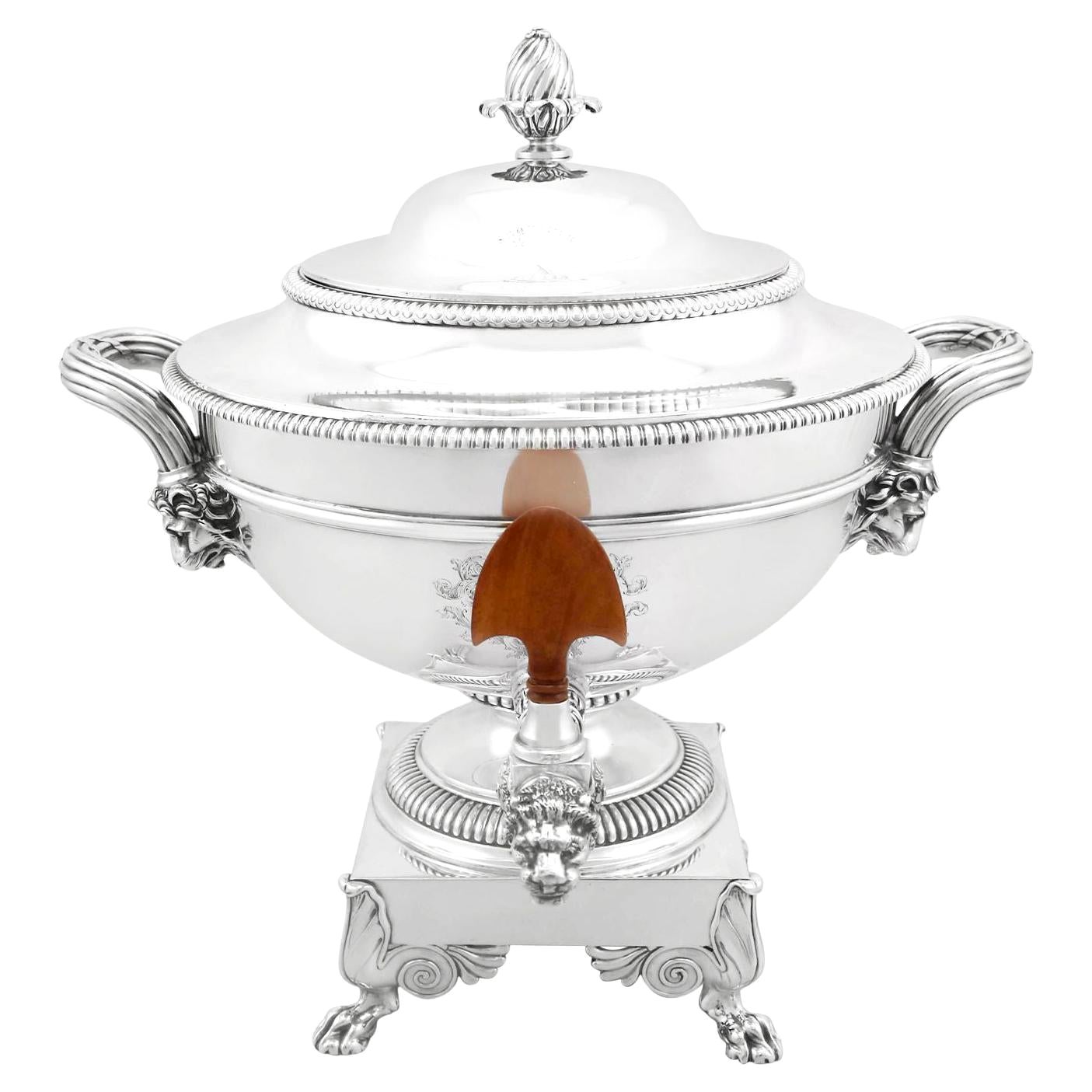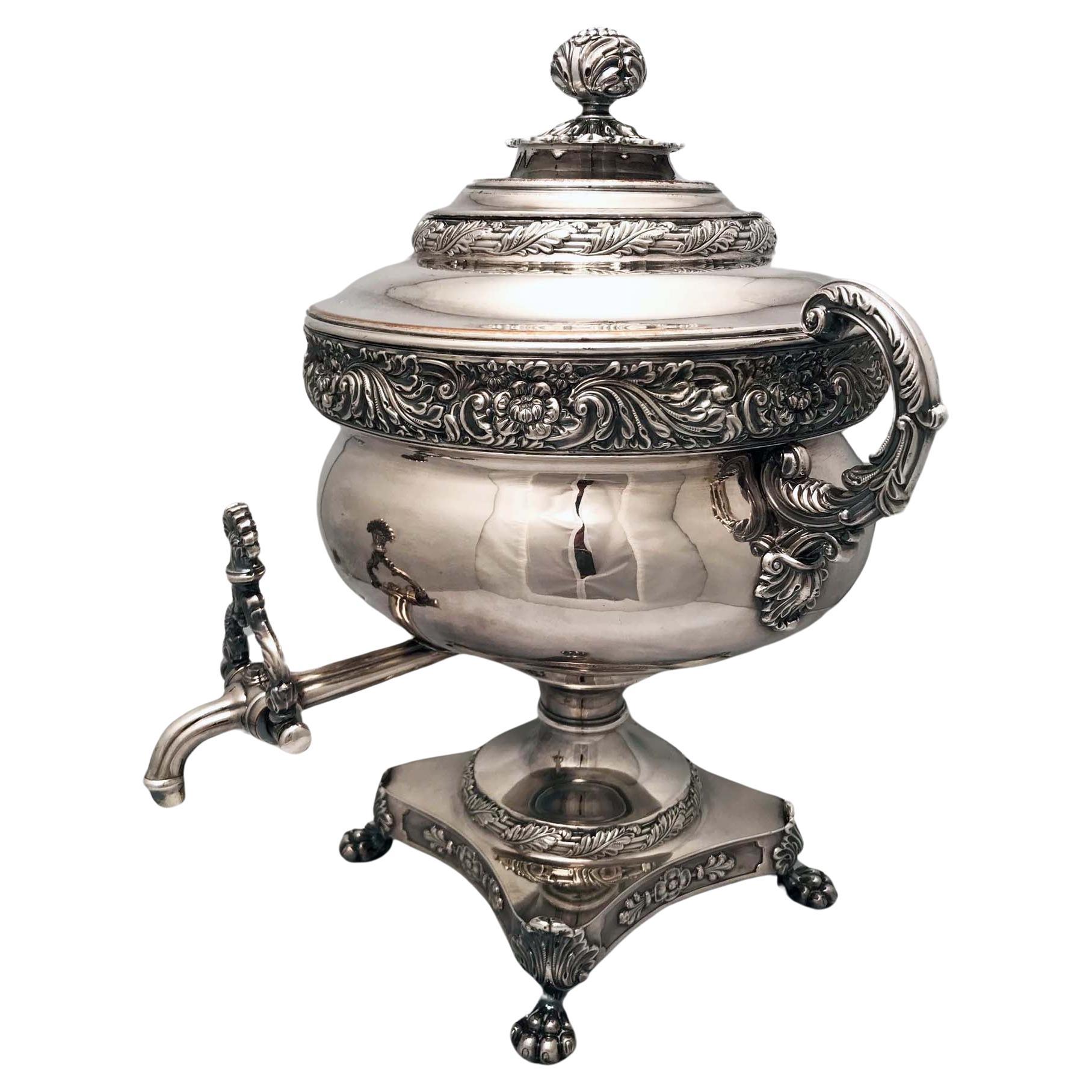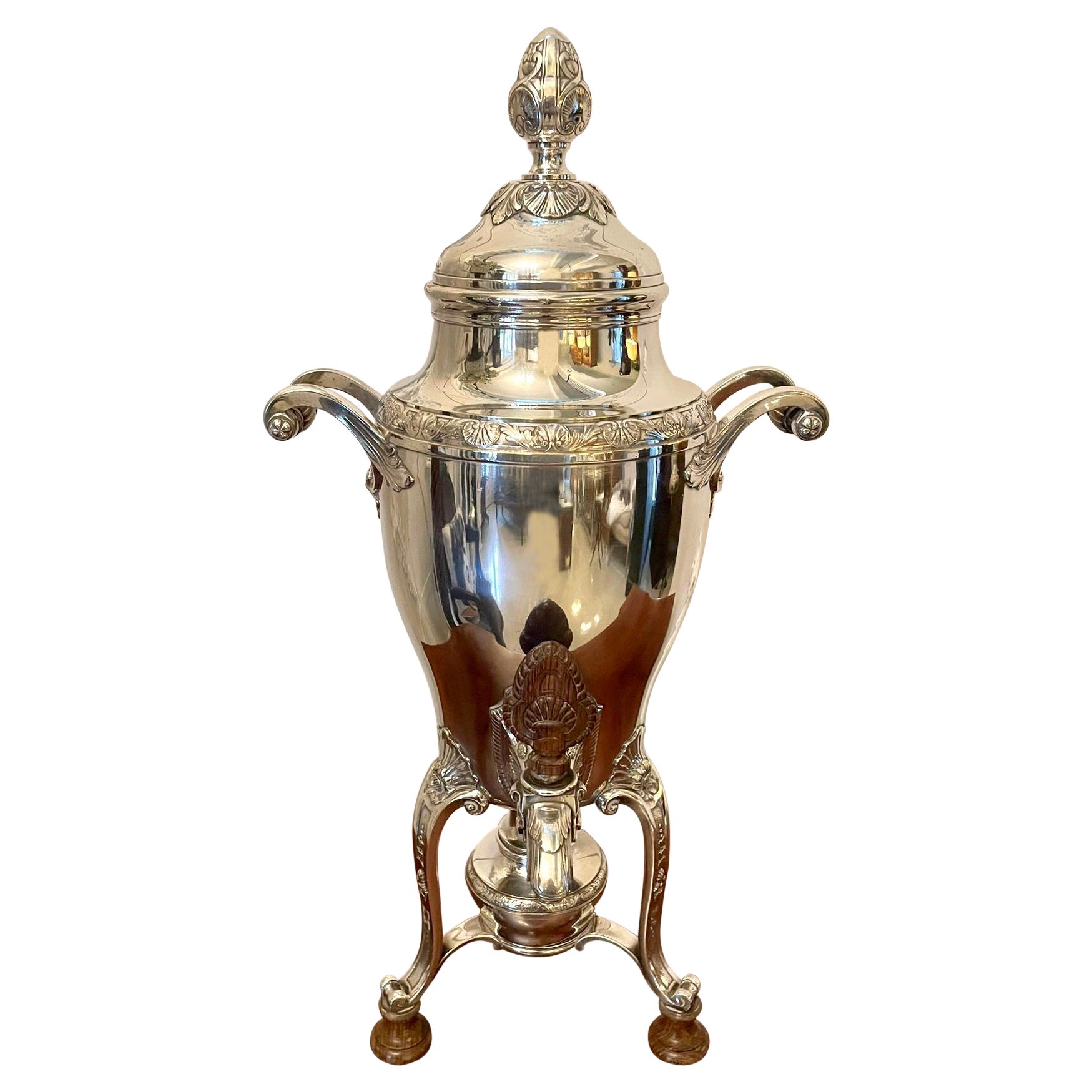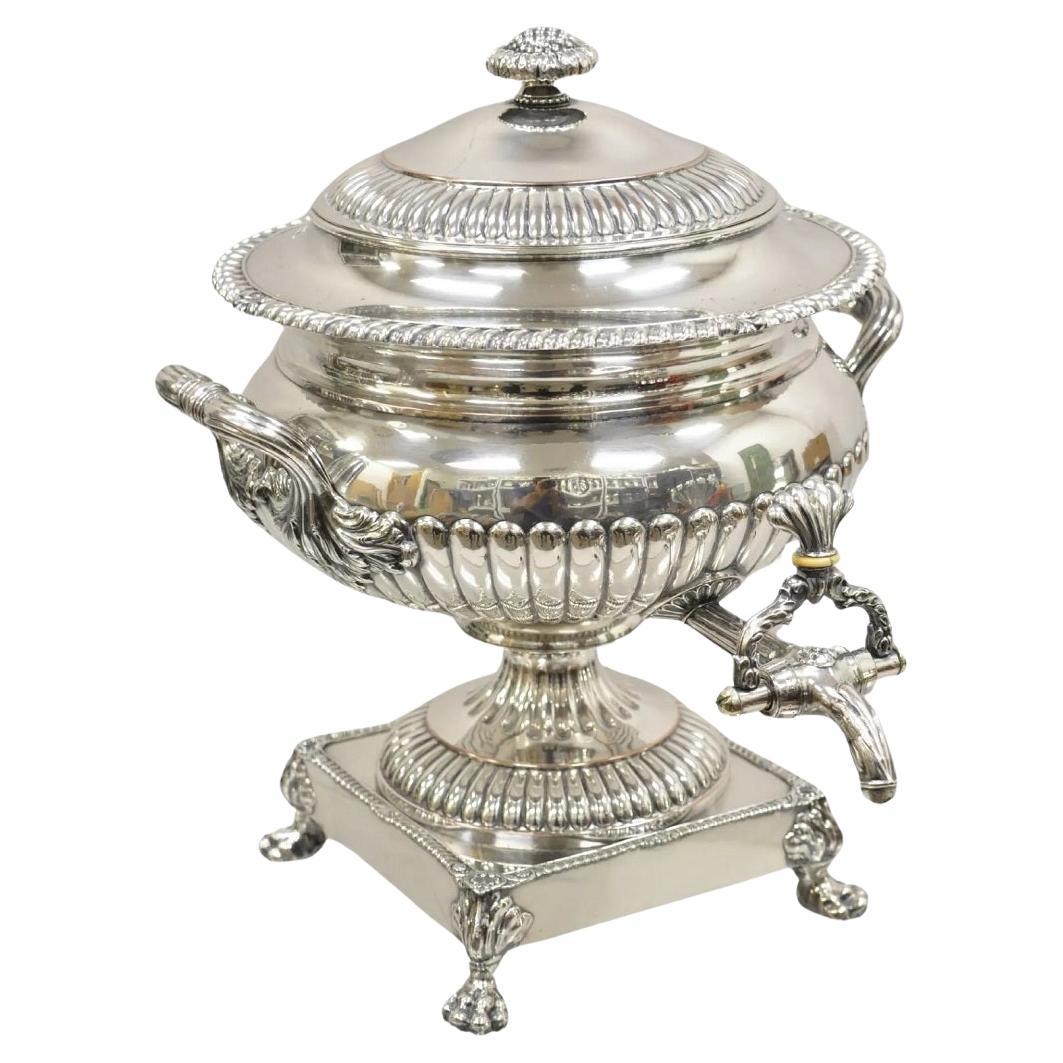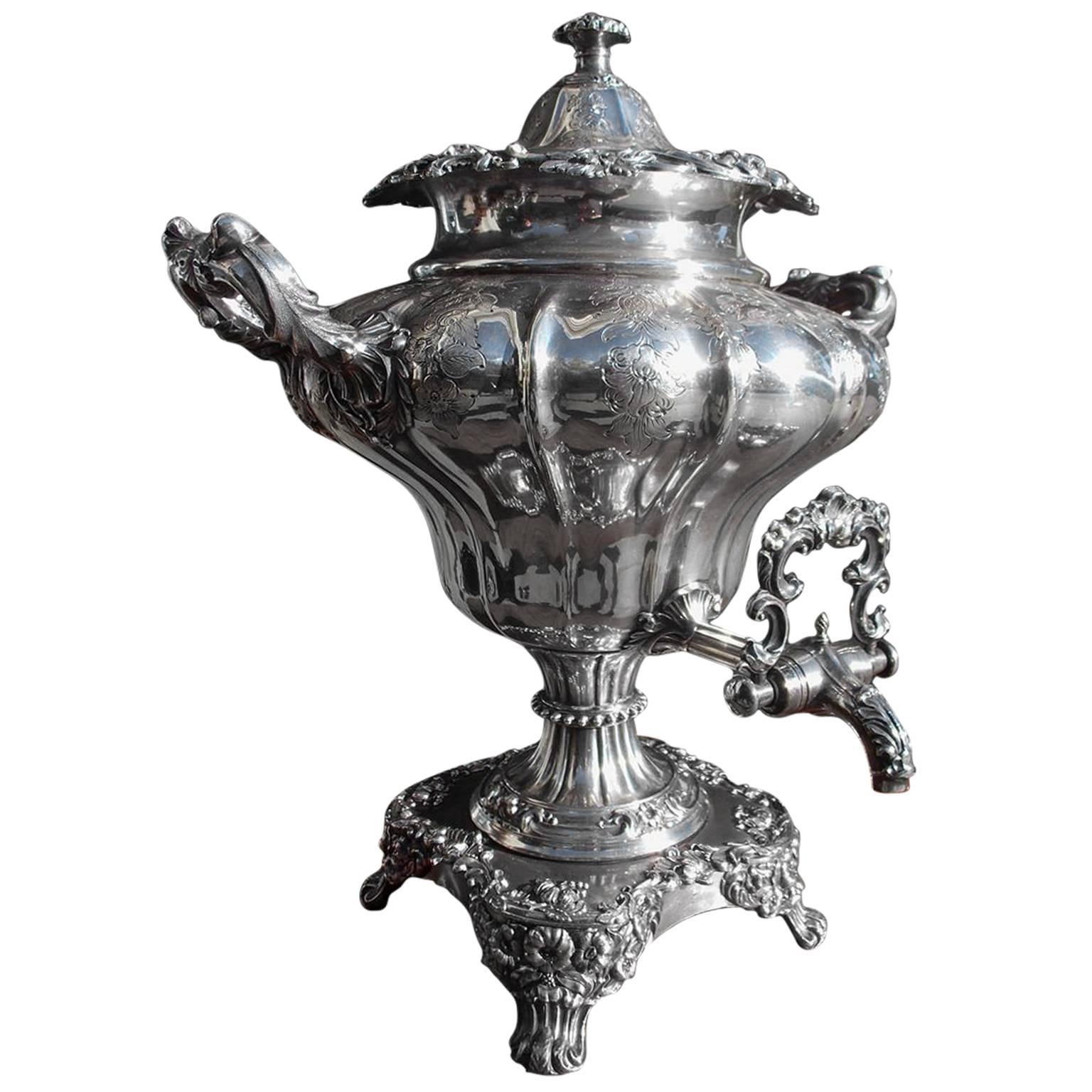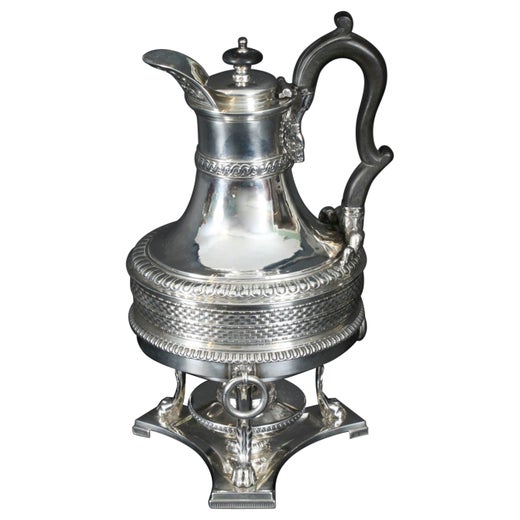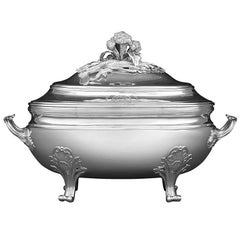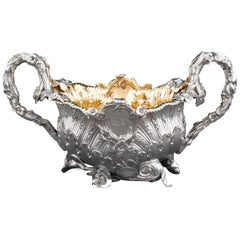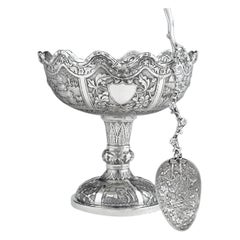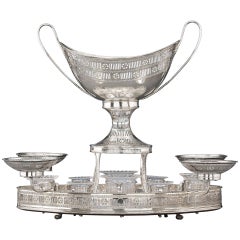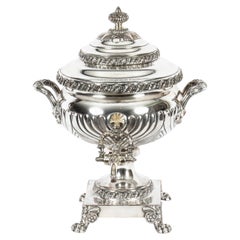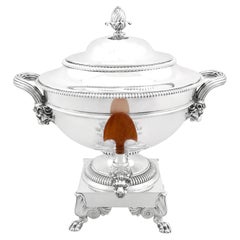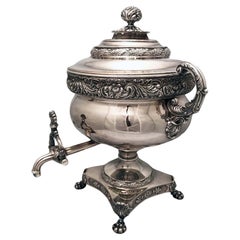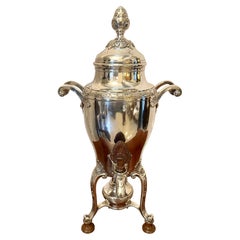19th Century Paul Storr Silver Tea Urn
About the Item
- Creator:Paul Storr (Metalworker),Rundell, Bridge & Rundell (Maker)
- Dimensions:Height: 16 in (40.64 cm)Width: 17.5 in (44.45 cm)Depth: 16 in (40.64 cm)
- Style:Georgian (Of the Period)
- Materials and Techniques:Silver,Engraved
- Place of Origin:
- Period:
- Date of Manufacture:1809
- Condition:
- Seller Location:New Orleans, LA
- Reference Number:Seller: 30-6179 1stDibs: LU891122999142
Paul Storr
Paul Storr was an English goldsmith and silversmith working in the Neoclassical and other styles during the late 18th and early 19th centuries. His works range from simple tableware to magnificent sculptural pieces made for royalty. Storr is credited with perfecting the works, styles and designs of the Regency period. His legacy is a remarkable body of work that spans over several stylistic periods with far-reaching influences. From his Neo-classical masterpieces to his exuberant, ornate vessels, Storr imparted a level of craftsmanship and superior quality that has seldom been seen since.
- ShippingRetrieving quote...Shipping from: New Orleans, LA
- Return Policy
More From This Seller
View AllAntique 18th Century French Louis XV Soup Tureens
Silver
Antique 19th Century English Rococo Sterling Silver
Sterling Silver
Early 20th Century Chinese Chinese Export Serving Pieces
Silver
Antique 18th Century George III Sheffield and Silverplate
Sheffield Plate
Antique 18th Century American Sterling Silver
Sterling Silver
Antique 19th Century English William IV Serving Bowls
Silver
You May Also Like
Antique 1820s Regency Sheffield and Silverplate
Sheffield Plate
Antique Early 1800s English Regency Serving Pieces
Silver, Sterling Silver
Antique Early 19th Century English Regency Sheffield and Silverplate
Silver Plate
Antique 19th Century European Victorian Sterling Silver
Sterling Silver
Antique Late 19th Century Unknown Regency Wine Coolers
Silver Plate
Antique 1830s English George IV Sheffield and Silverplate
Copper, Sheffield Plate, Tin
Read More
Paul Revere Crafted This Silver Coffee Pot 250 Years Ago
Perhaps best known as a Revolutionary War hero, Revere was also an accomplished silversmith, and this pot is now available on 1stDibs.
Degas Portrayed These Exuberant Ukrainian Dancers with ‘Orgies of Color’
Discovered in Parisian cabarets, the performers reenergized the artist’s practice.
